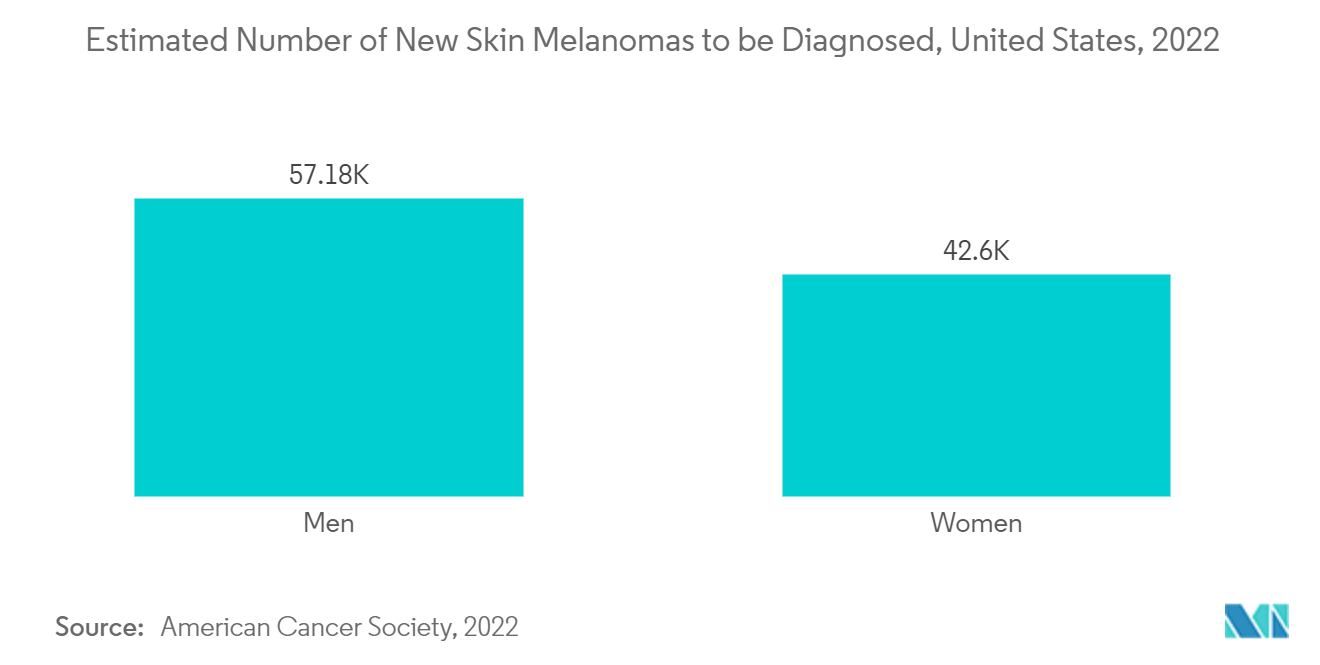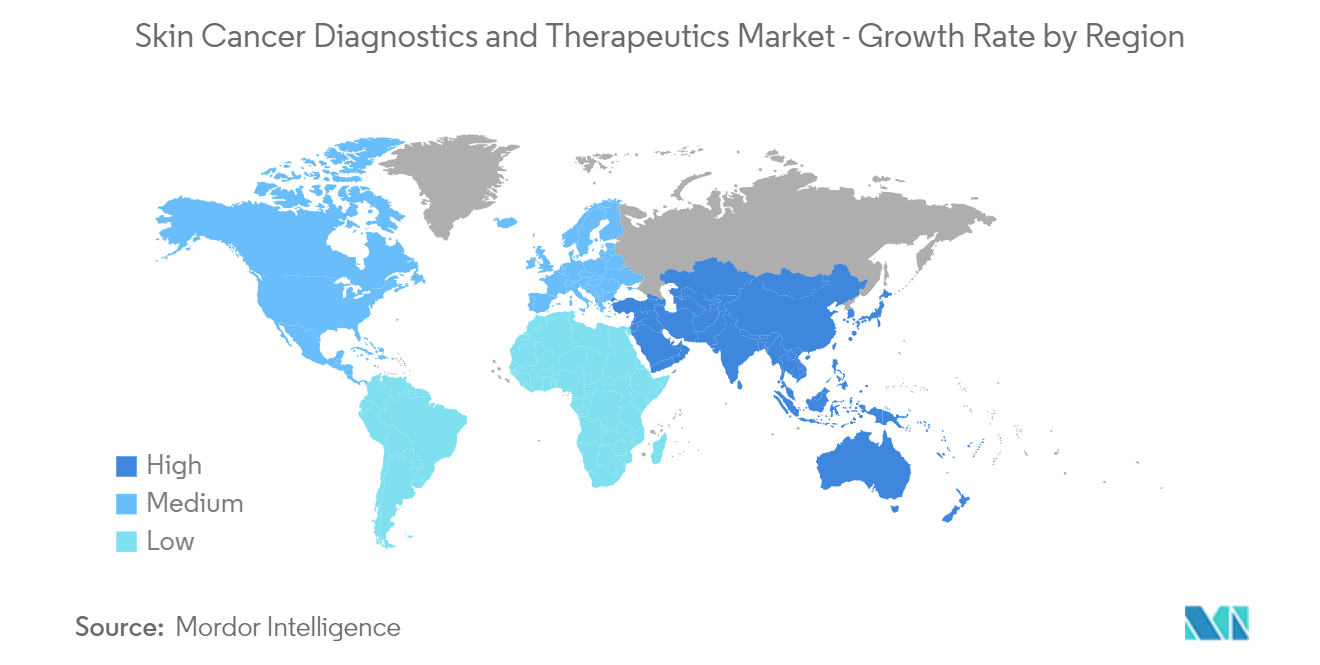Market Trends of Global Skin Cancer Diagnostics and Therapeutics Industry
This section covers the major market trends shaping the Skin Cancer Diagnostics & Therapeutics Market according to our research experts:
Non-Melanoma by Cancer Type Segment is Expected to Grow Over the Forecast Period
Non-melanoma skin cancer starts in skin cells, and a cancerous (malignant) growth is a group of cancer cells that can grow into and destroy nearby tissue. It can also spread (metastasize) to other parts of the body, but this is rare with non-melanoma skin cancer. Thus, the increasing cases of non-melanoma are anticipated to drive the growth of the segment.
The research increased during the pandemic to analyze the impact of a pandemic on all skin cancers. A study 'The impact of treatment delay on skin cancer in COVID-19 era: a case-control study' published in December 2021 mentioned in their discussion that the COVID-19 pandemic is associated with an increased skin cancer incidence and more skin cancer operations were performed in the post-lockdown period which was significant only for squamous cell carcinoma (SCC) a type of non-melanoma cancer. Thus, the demand for diagnostics and improved therapeutics increased during the pandemic, marking a positive impact on the non-melanoma segment.
The Skin Cancer Foundation data updated in May 2022 shows that about 90% of non-melanoma skin cancers are associated with exposure to ultraviolet (UV) radiation from the sun. As per the estimates of the Skin cancer Foundation, basal cell carcinoma (BCC) is the most generic form of skin cancer, and an estimated 3.6 million cases of BCC are diagnosed in the United States each year. And the source mentioned above also reported that the annual cost of treating skin cancers in the United States is estimated at USD 8.1 billion, which is about USD 4.8 billion for non-melanoma skin cancers and USD 3.3 billion for melanoma. Thus, the incidence of non-melanoma type skin cancer and associated treatment costs is anticipated to create opportunities for advanced therapeutics and diagnostics in the United States and other counties across the globe. Thereby, it is expected to boost the overall segment growth.
The insights on increased R&D in the segment are also predicted to drive segment growth. For instance, in December 2021, researchers and radiologists at Northampton General Hospital NHS Trust introduced Skin Brachytherapy, a highly targeted radiotherapy technique used to treat certain types of basal cell or squamous cell skin cancers.
Hence, the non-melanoma segment is growing, and it is expected to have significant growth over the forecast period. Hence, driving the growth of the studied market.

North America is Expected to Dominate the Market Over the Forecast Period
North America is expected to dominate the overall skin cancer and therapeutics market throughout the forecast period. The market growth is due to factors like the increasing prevalence and incidence of skin cancers. The United States is expected to be the largest market in this region.
The well-established healthcare infrastructure-focused market players in research and development (R&D) for cancer therapeutics, coupled with recent product launches and the rising burden of skin cancer in the United States, are primary growth factors for the market in the country. For instance, in July 2021, Merck, known as MSD outside the United States and Canada, received approval from the Food and Drug Administration (FDA) for its expanded label for KEYTRUDA, Merck's anti-PD-1 therapy, as monotherapy for the treatment of patients with locally advanced cutaneous squamous cell carcinoma (cSCC) that is not curable by surgery or radiation. Additionally, in May 2022, Labcorp., one of the leading global life sciences companies, launched a new assay for treatment options for melanoma. The new test enables the measurement of Lymphocyte-activation gene 3 (LAG-3) expression levels by immunohistochemistry (IHC) in tumor tissue. LAG-3 is an immune-oncology target with demonstrable clinical benefits in patients with melanoma. The test is available for use in both clinical trials and the care and treatment of patients. These recent developments are expected to drive the skin cancer diagnostics and therapeutics demand in the country, driving the overall market growth in the region.
Furthermore, the Skin Cancer Foundation data updated in May 2022 shows that an estimated 197,700 cases of melanoma will be diagnosed in the United States in 2022. Among those, 97,920 cases will be in situ (noninvasive), confined to the epidermis (the top layer of skin), and 99,780 cases will be invasive, penetrating the epidermis into the skin's second layer (the dermis). Of the invasive cases, 57,180 will be men and 42,600 women. Thus, the incidence and prevalence of skin cancer in the country are demanding the development of advanced diagnostics and therapeutics in the country for treatment, propelling the overall market growth in the region.
Hence, as per the factors mentioned above, the skin cancer cases in the United States is anticipated to create opportunity for advanced skin cancer diagnostics and therapeutics, driving the overall market growth in the country.

